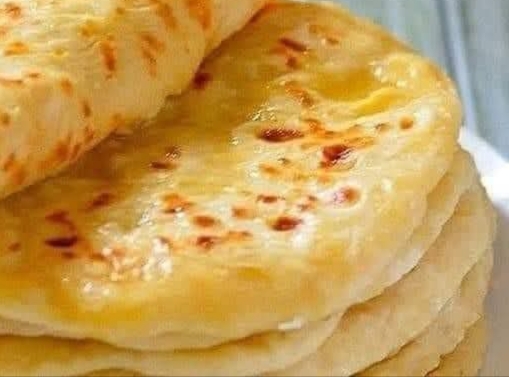Turkish Bread: The Most Delicious and Easy Bread You Will Ever Make!
Introduction
Turkish bread, known for its pillowy softness and slightly chewy crust, is a staple of Turkish cuisine — simple yet deeply satisfying. This versatile bread can accompany any meal, from breakfast spreads to grilled meats, soups, or dips like hummus and tzatziki. Its golden exterior and tender interior make it a crowd favorite, and the best part? It’s incredibly easy to make at home with basic ingredients and minimal effort.
Origin and Cultural Significance
Bread, or ekmek, holds immense cultural and spiritual value in Turkey. It’s more than food — it’s a symbol of sustenance and blessing. Wasting bread is even considered disrespectful in Turkish tradition. Turkish bread has been a part of Anatolian heritage for centuries, evolving from simple flatbreads baked in clay ovens to the fluffy loaves we know today. Found in bakeries, street markets, and family tables alike, it connects generations through shared meals and the comforting aroma of freshly baked dough.
Ingredients Quantity
For one large loaf or two medium loaves:
- 500 g (about 4 cups) all-purpose flour
- 150 ml (5 fl. oz) warm milk
- 150 ml (5 fl. oz) warm water
- 2 tbsp dry yeast
- 1 tsp salt
- 1 tsp sugar
- 2 tbsp olive oil (plus extra for brushing)
- 1 egg yolk (for brushing before baking)
- Optional: sesame or nigella seeds for topping
Optional Additions
- Yogurt (2 tbsp): For extra softness.
- Butter (1 tbsp): For richer flavor.
- Whole wheat flour (replace up to 30%): For a heartier version.
- Garlic or herbs (in the dough): For a fragrant twist.
- Cheese filling (feta or mozzarella): For a stuffed bread variation.
Tips for Success
- Activate the yeast properly: Use warm (not hot) milk and water to help the yeast bloom without killing it.
- Knead thoroughly: 8–10 minutes of kneading ensures a soft, elastic dough.
- Allow proper rising time: Let it double in size — this gives the bread its signature airiness.
- Don’t skip the egg wash: It adds that irresistible golden sheen.
- Bake with steam: Place a small pan of water in the oven to create a crisp crust and tender crumb.
Instructions
- Activate yeast: In a bowl, combine warm milk, warm water, sugar, and yeast. Let it sit for 10 minutes until foamy.
- Make the dough: Add flour, salt, and olive oil. Mix and knead for about 8–10 minutes until smooth and elastic.
- First rise: Cover with a clean towel and let it rest for 1 hour or until doubled in size.
- Shape the bread: Punch down the dough and shape it into a round or oval loaf. Place on a parchment-lined baking tray.
- Second rise: Cover and let it rise for another 20–30 minutes.
- Prepare for baking: Brush with beaten egg yolk and sprinkle with sesame or nigella seeds.
- Bake: Preheat oven to 200°C (390°F). Bake for 20–25 minutes or until golden brown.
- Cool slightly: Let it rest for a few minutes before slicing to maintain softness.
Description
This Turkish bread emerges from the oven golden and fragrant, with a thin, slightly crisp crust and an incredibly soft, fluffy interior. The texture is light yet satisfying, perfect for dipping into olive oil, scooping up stews, or pairing with cheese and olives. Each bite delivers comfort and warmth — a simple pleasure that feels like home.
Nutritional Information (per serving, based on 8 servings)
- Calories: ~210 kcal
- Protein: 6 g
- Carbohydrates: 36 g
- Fat: 5 g
- Fiber: 2 g
- Sodium: 220 mg
- Sugar: 1 g
(Values vary with added toppings or fillings.)
Conclusion and Recommendation
Turkish bread is a testament to how humble ingredients can create something extraordinary. It’s soft, flavorful, and incredibly versatile — equally delicious with sweet spreads like honey and jam or savory pairings like kebabs and soups. Whether you’re new to bread-making or a seasoned baker, this recipe guarantees success and satisfaction with every loaf.
Embracing Healthful Indulgence
To make this bread more wholesome without sacrificing its delightful texture, try replacing part of the flour with whole wheat, using olive oil instead of butter, and reducing salt slightly. Enjoy it fresh out of the oven with a drizzle of olive oil and herbs — a balance of nourishment and indulgence that perfectly reflects the Turkish way of enjoying food with love and gratitude.
